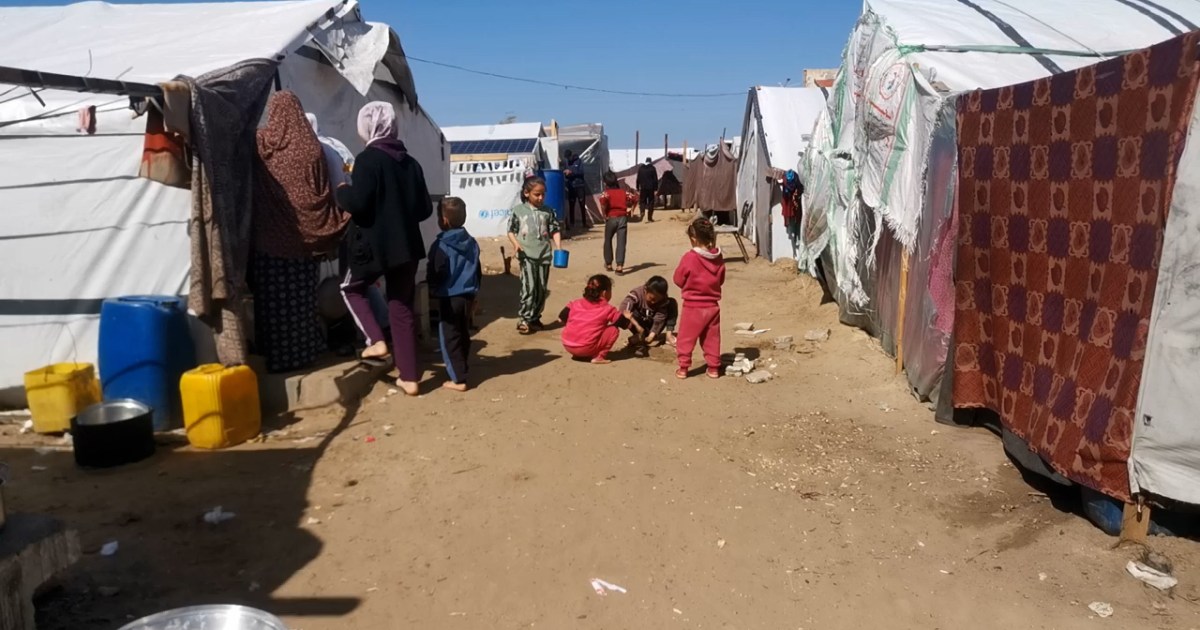play videoplay video
Video duration 02 minutes 05 seconds 02:05
Gaza -
With the question “Where should we go?” The displaced woman, Amal Qadoum, began her conversation with Al Jazeera Net, and continued: “We do not know where to go and where to sit. It is forbidden for them to do what will happen to us. Two months in Rafah, enduring hunger, thirst and a narrow place, but they also make it difficult for us! No, God is enough. I hope the war ends.”
As for her neighbor in the tent, Yusra Shamlakh, she explains her tragedy and the difficulty of living with her family of 9 members, in a narrow place that is “not suitable for human living,” as she describes it. She says: “We were tired when we found the tent, and we set it up in the air, the winter, and the wind, and it was very tight for us, and now they want to take us out.” From Rafah, where should we go?
This question was frequently repeated among the displaced, especially after the end of the last round of talks between the United States, Egypt, Israel and Qatar, regarding the truce in Gaza, without achieving a breakthrough, amid increasing international calls for Israel to withdraw from its planned attack on the city of Rafah.
The UN Adviser on the Prevention of Genocide, Alice Wairimu Nderitu, said in a statement: “The risk of committing brutal crimes in Rafah, in the southern Gaza Strip, is serious and real.”
Currently, about 1.3 million displaced people reside in the city of Rafah, in addition to about 250,000 of its original residents, in an area not exceeding 64 square kilometers, and all of them are threatened with displacement, amid fears of new massacres.
Source: Al Jazeera

